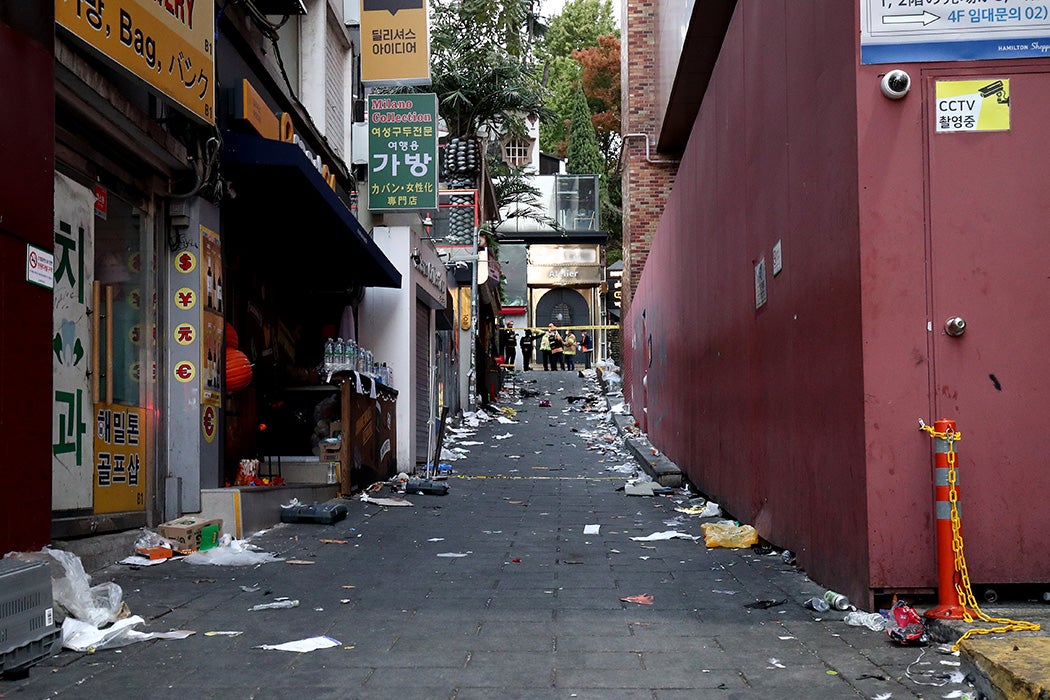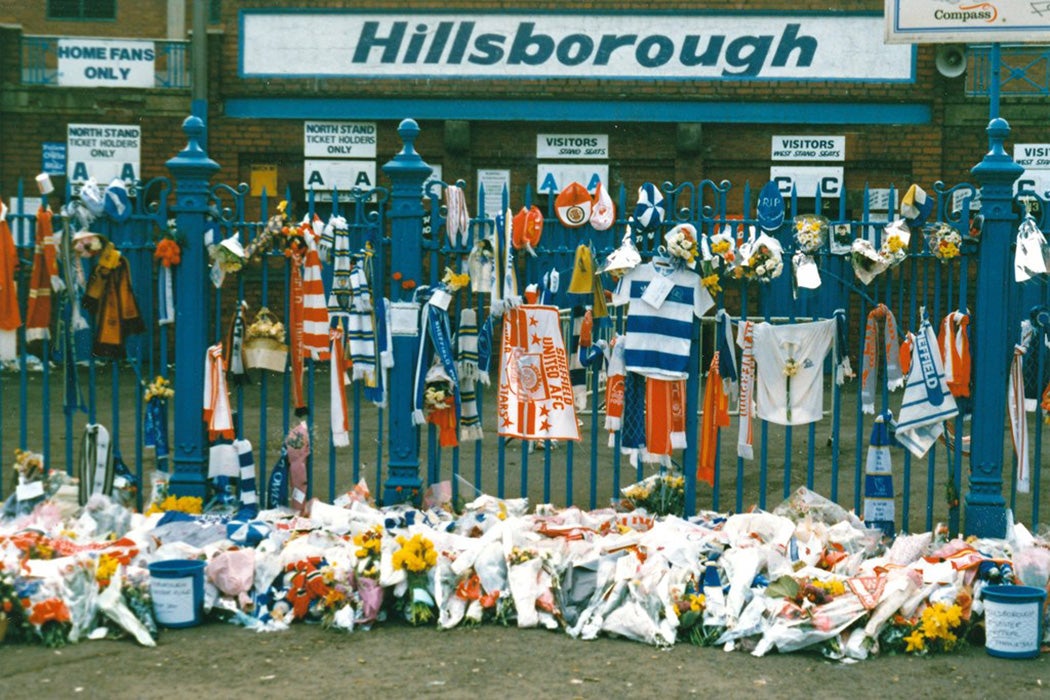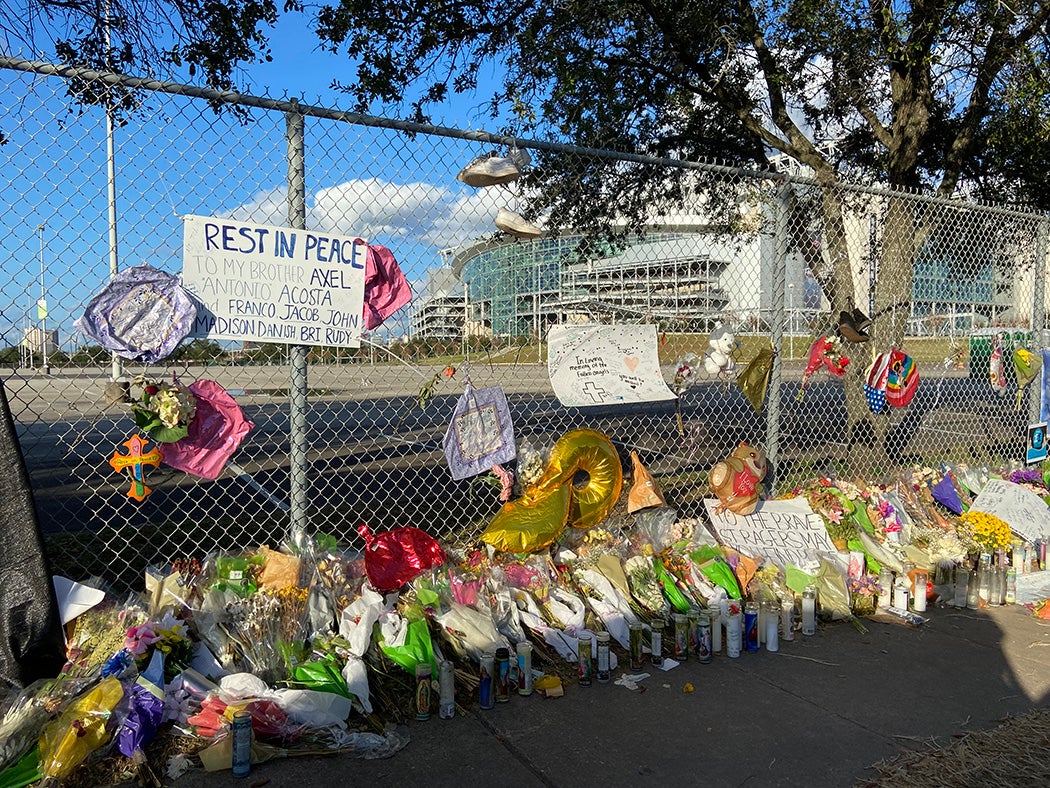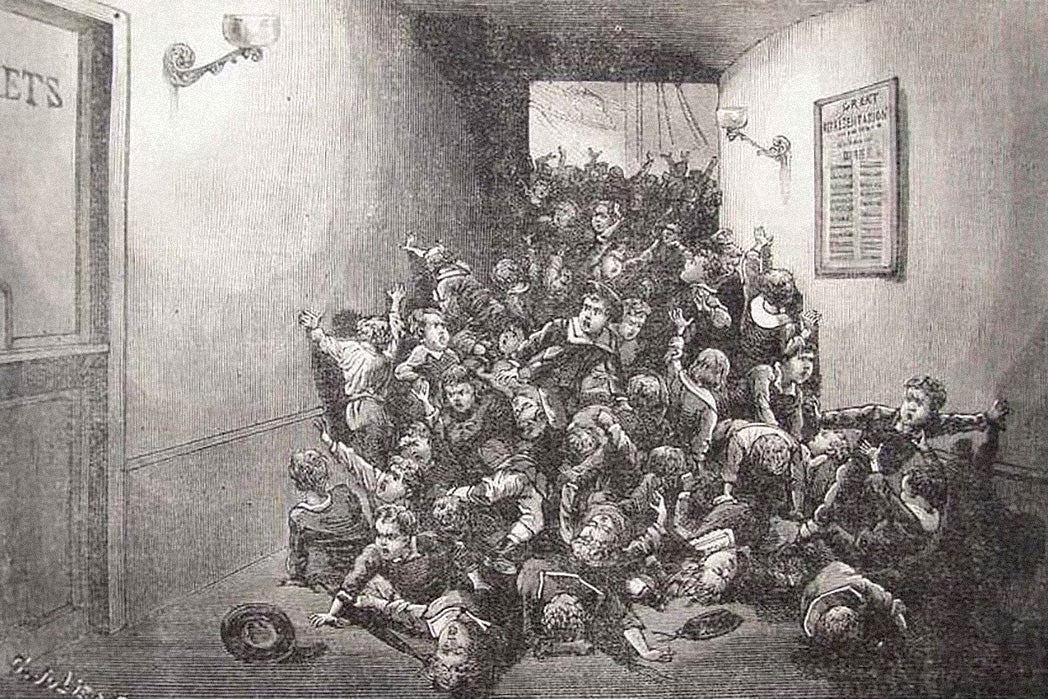June 16, 1883 began with a flurry of innocent joy in the windswept English port town of Sunderland, as hundreds of children hurried to the Victoria Hall for a chance to see traveling stage performers Mr. and Mrs. Fay. The Fays had arrived with the propitious assurance that their audience would be blessed with “the greatest treat for children ever given.” What child under the age of 11 could resist? After a gripping magic show in the packed theater, the enraptured young audience were informed that a lucky few would receive special prizes. As the children in the front stalls were distributed toys, those seated in the gallery feared missing out, and piled into the narrow staircase that led towards the stage. Few adults were present to supervise the excitable youngsters, and the resulting surge created a deadly crush at the partially opened exit door, which allowed only one child at a time to exit. Others from the gallery bringing up the rear were unaware of what was happening ahead of them at the epicenter, and continued forward, further compressing those trapped at the door. More than 180 children died that day from compressional asphyxia, including a class of 30 from a local Sunday School.
What is devastatingly apparent, as we read an account from survivor William Codling, is that the deadliness of any crush lies in the indiscernibility of the drastic shift between joyful physical communion and a sudden “race for death.” Within mere seconds of leaping from his seat, Codling was gasping for breath amidst a mounting sea of bodies, surrounded by “white bewildered faces, wails of distress, and piteous questionings where none could answer.” Of all man-made disasters, the crowd crush has perhaps remained the most anatomically consistent, and a quick glance at the morbid catalogue of crushes throughout human history will indicate parallels and hallmarks that have been echoed without fail over the past two centuries. Nathan Taverniti’s recollection of his experience just last month in Seoul, where more than 150 people died at a Halloween celebration in the Itaewon district, bears an eerie resemblance to Codling’s account of 139 years ago; by the time Taverniti had clocked the imminent danger, it was too late to divert the inevitable or make an escape, and within seconds his three friends had disappeared into the crowd. Just as the safety measures by organizers at Victoria Hall were virtually non-existent, so too were they absent in Itaewon, according to Taverniti.

One would think, given frequent duplications of these events, that enough preventive strategies would have been introduced to end the cycle. But if one trait sets apart the crowd crush from other disasters, it is persistent and harmful mischaracterization. Time and again public discourse and media coverage pertaining to crushing tragedies has linguistically distorted the reality of what truly happens. Indeed, as the incident in Seoul began to weave its way into the online ecosystem of trending topics, common misnomers apportioning blame to the dead were already making the rounds: “panic,” “mob,” “stampede.” A salacious rumour spread that the reason for the crush had been that the crowd of young revellers were charging to catch a glimpse of a local celebrity. You would be hard pressed to find any other man-made disaster where the demonization of victims is so easily tolerated.
Weekly Newsletter
One of the most damning examples of this is what happened in the aftermath of the Hillsborough football stadium disaster in 1989. In the years prior, the stadium in Sheffield, England had been redesigned for the standing-only pens to feature steel fencing and crash barriers, intended to keep fans inside the pens and prevent them from spilling out onto the pitch. It sounds reasonable in theory, until you realize that these measures prioritized containment as opposed to safety. When football fans gathered to watch the FA Cup semi-final between Liverpool and Nottingham Forest on April 15, police match commander David Duckenfield decided to open an exit gate, which would direct fans into the terrace that was already fit to burst. The new design of the pens made migrating to nearby seating areas with accommodatable space impossible. Even as fans were still pinioned against crash barriers and perimeter fences, a false narrative was brewing. Upon being asked by FA officials what had happened, Duckenfield did not admit that it was he who opened the gate; instead, he blamed fans for forcing their way through.

Due to gross negligence and mismanagement on the part of South Yorkshire Police, 94 Liverpool fans were crushed to death in the pens. Three others died years later from related injuries. In her detailed examination of the police inquiries that followed this catastrophe, linguistics professor Patricia Canning cites the power of suggestive semantic appropriation and narrative framing in the efforts of authorities to deflect blame. The process of evidence-gathering was littered with nominalizations such as “crowd trouble,” “disturbance,” and “pitch invasion,” fully activating the schema of football hooliganism and thereby placing responsibility on the victims. Collaterally, grieving families were subject to a gruelling identification process, having to painstakingly pore over a board of uncategorized Polaroids of dead bodies; they were then led to the bodies of the deceased, whose faces were covered unceremoniously with trash bags. This was followed by an interrogation by police regarding whether the victims had consumed any alcohol that day. Infamously, British tabloid The Sun published a front-page story emblazoned with the headline “The Truth,” accompanied with egregious lies about fan behavior purposefully generated by South Yorkshire Police. The falsehoods perpetuated by both police and the press were instrumental in the 1991 inquest verdict, which deemed the deaths “accidental.” “The first inquest was dehumanizing,” said a relative of two Hillsborough victims in a 2017 report into the experiences of bereaved families. “The deceased were numbers, not names.”
This designation of the victims of crushes as inherently selfish, violent, mindless hordes has dominated the public perception of crush disasters since the early days of crowd psychology as a field of research. Gustave Le Bon in his seminal work The Crowd (1895) posited that crowds, by nature, could deprive a man of his mind and moral conscience. “Isolated, he may be a cultivated individual; in a crowd, he is a barbarian,” Le Bon wrote. He further characterized crowd behavior as reminiscent of, “inferior forms of evolution- in women, savages, children.” Christian Borch offers a possible motivation for Le Bon’s linking of authoritarian and racist social hierarchies with crowds. They represented, he argues, “an unforgivable assimilation of conflicting racial characteristics and hence, from the vantage point of the superior race, to evolutionary regression.”
Accepting that late-Victorian crowd psychology and anthropology was entrenched in racist, classist bigotry and a prevailing fear of, “political threat to established power (…) via universal suffrage, populism, class solidarity, and racial equality,” is to also accept that these intrinsically sectarian outlooks have continued to rear their ugly heads in both modern psychology and general public discourse. Kenneth Rogers notes the subtle connotations to Le Bon’s chauvinistic theories in media coverage of the death of Walmart employee Jdimytai Damour in a 2008 Black Friday crush. In that case the crowd of shoppers were universally condemned as “grotesque, a drunken devolution of human civility.” It was this widespread vilification, Rogers says, that impeded a well-needed probe into “the complex historical and systemic context of the incident,” namely the exploitative use of Black Friday by market forces to extract profit from vulnerable, low-income communities during a crippling economic recession. Deconstructing the stigma and dehumanization of crowd disasters is to also deconstruct the remaining shades of class stratification and uncountable power dynamics.

Instead, any effort to turn the tide on both public opinion and outdated schemas related to crowd crushing has been largely ignored by governing authorities and industries. As early as 1987, two years before Hillsborough, Norris R. Johnson’s empirical assessment of The Who concert disaster in Cincinnati, 1979, clearly identified the hedonistic and drug-addled rock fan stereotype as a concomitant to the unreliability of theoretical models within collective behavior literature and psychology. Paul Wertheimer, Cincinnati’s Public Information Officer during the disaster, went on to become a leading voice in crowd safety dynamics, and was one of the few experts who testified against Walmart after Jdimytai Damour’s death.
Innovators like Wertheimer have been responsible for numerous breakthroughs in engineering and prevention through design methods to curtail overcrowding, from emergency procedures to improved door mechanisms, each of which stands as a poignant memorial to the catastrophes that shouldn’t have been. One of the lasting legacies of the Victoria Hall disaster came in the form of a young aspiring architect who was so deeply affected by the tragedy that he vowed to ensure such devastation would never happen again. Robert Alexander Briggs’ invention of the Panic Bolt introduced a mechanism that has since become a safety regulation mainstay in every large occupancy that requires mass evacuation. A recent exhibition Football: Designing the Beautiful Game at the Design Museum in London featured a space dedicated to the efforts of architects and designers following Hillsborough to reinvent the stadium experience with consideration for fan safety and crowd circulation.

Yet still, time and time again, it happens. Little has changed since 1979, Wertheimer told Business Insider in the wake of the Astroworld Festival disaster in Houston in 2021, where ten people were killed. “Every time the concert and festival industry get a wake-up call in the form of a tragedy like this most recent one, it’s as if they hit the snooze button until the next incident,” he said. Organizers who cut corners and authorities refusing to take accountability are still preventing any real progress, but it is down to a broader cultural judgement of crowd disasters that provides them with enough fuel to continue passing the buck. It is down to us, as mass-communicators in the digital age, to put an end to the recurring falsehoods, victim-blaming terminology, and misinformation. This means refusing to retweet or like a post about a lack of “mosh pit etiquette,” at Astroworld, and to avoid using any deaths or injuries sustained on Black Friday to push the tired narrative of materialistic, greedy shoppers, especially as we re-enter a period of recession.
Back in Sunderland, William Codling recalled the moment he and a friend discussed the possibility of hiding under a banister until help arrived. Realizing that this was an impossible feat, the two of them “surrendered ourselves to philosophic reasoning and dreamy apathy.” It is an affecting quote, not least for the image it conjures up of a small child resigning to the reality of impending death, but also for the inadvertent foreshadowing in Codling’s words. For it was indeed an ethically spurious philosophical reasoning, fused with apathetic detachment from human suffering, that came to cultivate future experiences like his.
Support JSTOR Daily! Join our new membership program on Patreon today.







